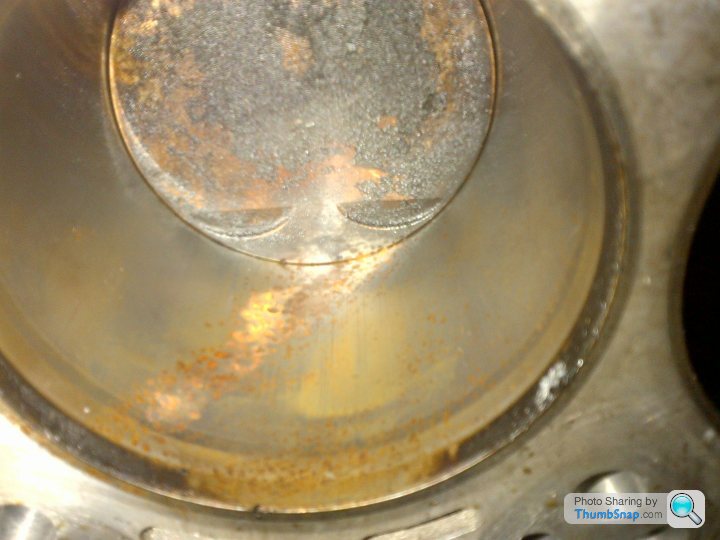Turning over the engine after non-use
Discussion
Following on from the "to neutral or not to neutral" thread, here's another question on looking after one's AM. If the car's been sitting around for a week or more, I tend to start it up with foot fully down on the throttle, to turn over the engine for a few seconds and get the oil circulating without actually firing it up. Is that common behaviour, or odd behaviour?
Incidentally, this is my second V8V and I've never had a problem with battery discharge when not in use, and I've never bothered with the conditioner. But then both my cars had the tracker disabled, which I suppose could be a power drain if faulty.
Incidentally, this is my second V8V and I've never had a problem with battery discharge when not in use, and I've never bothered with the conditioner. But then both my cars had the tracker disabled, which I suppose could be a power drain if faulty.
Greenslade said:
why ? oils these days are so good that there will always be a film of oil on your cams /cam followers/. Foot down on the throttle will pour fuel into your bores which will be detrimental on wear in the long run.
I thought that full throttle on start actually cut the fuel supply. Isn't this an AM approved procedure?toofastforme said:
Incidentally, this is my second V8V and I've never had a problem with battery discharge when not in use, and I've never bothered with the conditioner. But then both my cars had the tracker disabled, which I suppose could be a power drain if faulty.
You're not alone.... we've never had an issue with battery drain, even with a operational tracker. I've only recently plugged the conditioner in for the last 10 months, which I tend to do when the mercury really plummets.BingoBob said:
toofastforme said:
I thought that full throttle on start actually cut the fuel supply. Isn't this an AM approved procedure?
Yes, it's in the manual. I do this also. Yesterday i found out that Rick Wakeman played piano on "life on mars"
what a great world we live in
BingoBob said:
Yes, that'll be the piston rings gouging the cylinder liners. 



 Not too far off the mark, but a little too dramatic
Not too far off the mark, but a little too dramatic 
Not so much seen in road cars, but most of the race car engines we have for scheduled rebuild suffer wear not due to mechanical damage or fatigue but because of surface corrosion to liner that causes inefficient gas sealing (ring to liner).
Below is a severe example to paint the picture. liner corrosion is prone on race cars because they are left from end of season, say October, to preparation for next season, say Feb. They are often left in damp conditions and without removal of the plugs and treatment to liners, such as WD40, corrosion similar to what is pictured occurs. This sort of corrosion can not be removed by cranking prior to start as the ring doesn't act as a scraper to remove it. The corrosion is for want of a better term 'ground' into the liner and creates a weak point where gas escapes between piston ring to liner leading to inefficiency.
But, cranking prior to start after prolonged period of downtime is no bad thing, and will prime the oil circuit for sure.
Message is to start during the winter period at least once a month, and if not going out on the road allow to reach fully warm operating temperature, perhaps run until the cooling fans can be heard to run at speed.

Owners Manual said:
Starting the engine without sufficient lubrication can
cause serious engine damage. Ensure engine oil pressure
is established before allowing the engine to start.
4. Obtain engine oil pressure:
4.1 Press and hold the accelerator hard to the floor. This
will temporarily inhibit the fuel injection during
cranking.
4.2 Fully press the brake (SportShift) / clutch (Manual)
pedal down. Insert the vehicle key into the Ignition
Control and move through to engine start. Allow the
engine to crank until the oil pressure icon (on
the instrument pack) extinguishes, indicating oil
pressure in the engine.
4.3 Switch the ignition OFF. Release the vehicle key and
accelerator pedal.
5. Start the engine normally and check that the oil pressure
and ignition warning lamps go out as the engine starts,
indicating correct oil pressure and battery charging.
6. Raise the hood and check for leaks of fuel, oil and
coolant.
Alan
cause serious engine damage. Ensure engine oil pressure
is established before allowing the engine to start.
4. Obtain engine oil pressure:
4.1 Press and hold the accelerator hard to the floor. This
will temporarily inhibit the fuel injection during
cranking.
4.2 Fully press the brake (SportShift) / clutch (Manual)
pedal down. Insert the vehicle key into the Ignition
Control and move through to engine start. Allow the
engine to crank until the oil pressure icon (on
the instrument pack) extinguishes, indicating oil
pressure in the engine.
4.3 Switch the ignition OFF. Release the vehicle key and
accelerator pedal.
5. Start the engine normally and check that the oil pressure
and ignition warning lamps go out as the engine starts,
indicating correct oil pressure and battery charging.
6. Raise the hood and check for leaks of fuel, oil and
coolant.
Alan
Gassing Station | Aston Martin | Top of Page | What's New | My Stuff




